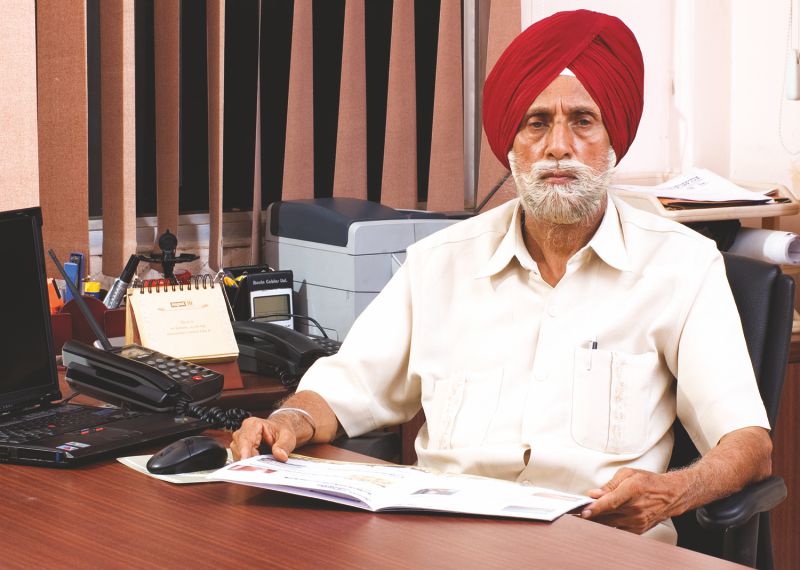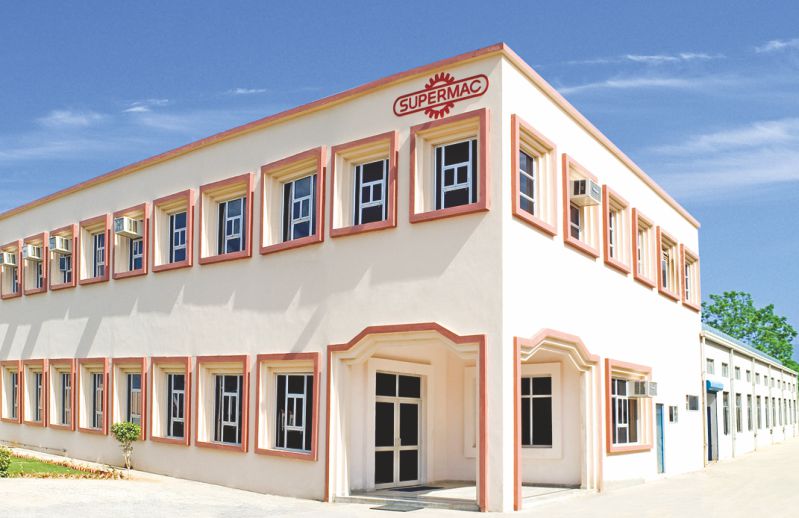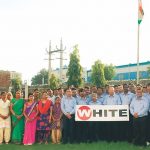Moving fast with the global accuracy and precision requirements of machining, Supermac is now producing high output machines, manufacturing wires and cables up to 1 Km/Min and CCV extrusion lines up to 132 KVA.
Built on the combined vision of Mr. Harbhajan Singh and Mr. Kamarjit Singh, Supermac is a leading solutions provider of advanced manufacturing systems for cable industries worldwide. Established in 1974, the company’s innovative approach has helped it gain prominence in manufacturing of extrusion lines, insulating equipment and sheathing machinery for premier manufacturers of power cables, optical fiber cables, housing wiring, control cables, and other areas.
Starting the journey with the maintenance of imported machinery in the Indian cable industry, Supermac soon began capitalizing on its extensive expertise and skill to design and manufacture original machines with a focus more on technological improvements than profitability. Its technological transition has been swift from making conventional machines earlier to manufacturing high-value CNC machines now. Supermac has matched the global technological pace with every other machine design and has put Indian technology on the world map with its cutting-edge manufacturing systems meant for the wire and cable industry.
Laced with three advanced manufacturing facilities located in Manesar and New Delhi covering an area up to 95,000 square feet, Supermac is the sole company in India with in-house panel making, automation and testing facilities. The company is not only an efficient machine maker, but also has a team of specialized engineers to handle the commissioning and installation tasks of varying complexities. Wire & Cable India recently had a brief interaction with Mr. Harbhajan Singh, Chairman, Supermac Industries (India) Pvt. Ltd. to know more about the technology, trends, and vision that will help transform the Indian wire and cable industry into a global manufacturing entity. Excerpts:
Wire & Cable India: You have been active in the machine making field for a long time. Tell us how you have seen the wire and cable industry evolving from technology perspective and how Supermac matched the changing need of the industry through its technology?
Harbhajan Singh: The wire and cable industry was comparatively at a primitive stage when we entered machinery making back in 1970s. We started with the maintenance of imported machinery being used by the cable industry in India and ended up making the machines ourselves. Being technocrats, our focus was more on technological improvements rather than business profitability. Most of our efforts were put in for development of better and better machines.
Initially, we were working on conventional machines – mother machinery made in India. Gradually, we shifted to imported machinery and special purpose machines. For the last ten years, we have switched to computerized numerically controlled (CNC) machines. The accuracy and precision of machining has improved by leaps and bounds. As a result, we are now producing high output machines, manufacturing wires and cables up to 1 Km/Min.
We started with machines for manufacturing house wiring cables and now we are manufacturing CCV extrusion lines up to 132 KVA. We are now producing automatic machines with automatic dual control take-up where changeover of the cable being produced from one spool to the other is electronically controlled so that there is no loss of production. Technological development is a regular process in Supermac due to our focus on technology and we shall endeavor to match the latest technology available in the world.
WCI: Share with us the infrastructure, machine design tools, and skilled team in place for the machines you make. It is also known that Supermac uses the best-in-class OEM equipments; how do they help you in designing and developing your kind of machines?
HS: We started making machines as technocrats and therefore free hand sketches for the various machine components was the way to guide the skilled workers with personal supervision. We shifted to drawing boards and blue prints for drawings of various machine parts. And now all the drawings are made on computers and simulation softwares. This has improved the speed of designing and visualizing the machinery parts for successful machine design. Skilled manpower fully equipped with the latest computers software helps in designing machines with better technology.
WCI: Among indigenous manufacturers, a Supermac machine is indisputably the most preferred and probably a little bit expensive too. Is that an indicator of quality and robustness? Share with us the standards, national or international, you adhere to while making your machines.
HS: It would be wrong to say that SUPERMAC machines are more expensive than ones produced by other manufacturers in India. However, we do command a premium over the peers because of latest technology and much higher investment in our capital machinery. Not only this, for providing turnkey solutions to our customers, we combine our machines with high quality components imported from Europe. Most of the bought out components used by us are from the best available in the world. Consequentially, all this adds to the cost of machine and inspite of the premium charged by us, we are highly competitive and ‘almost half the price’ of the imported machines and giving the same quality and performance.
WCI: Supermac has gradually risen to become a machine maker of global acclaim unlike its peers in India. What does make Supermac a truly global company? In what ways is Supermac different from its peers?
HS: For a long time, we have been participating in specialized international exhibitions for wires and cables and therefore we have always tried to compete with international manufacturers of machinery. With other machinery manufacturers in India, our attitude has always been one of cooperation and not of competition. As technocrats, our focus has always been on latest technology and development to meet the latest.
WCI: Being such an experienced person, can you throw some light on the upcoming possibilities in cable industry and the challenges it will bring?
HS: The upcoming possibilities in the cable industry are increasing automation and higher production capabilities. This involves keeping in touch with the latest designs and making improvisations keeping in view the customer requirements and the available technology. The challenges would be higher amount of investments in R&D as well as in capital machinery. The ultimate goal of the supplier should be to design the machine which is energy efficient, high in productivity and robust enough to sustain in difficult working conditions. This can result in faster ROI for machine investment done by customers.
WCI: Do you have some specific strategy or new improvisations in mind as of now to meet the changing demands of the cable industry?
HS: For the present, we are working on bigger sizes of equipment to give higher output capacity. We are also making new improvisation for making solar cables. The new engineering plastics ask for high investment in R&D, and we are constantly gearing up for that.
WCI: Can you elaborate us on any major or recent accomplishments? Are you planning to add new products to your already existing portfolio?
HS: We are receiving more demand for high speed insulation lines. We are making further investments for meeting higher demand for existing products, which leaves little scope for adding new products.
WCI: Would you like to add something before we conclude?
HS: The second generation has taken charge and they would be making further developments over and above what has been achieved so far.






